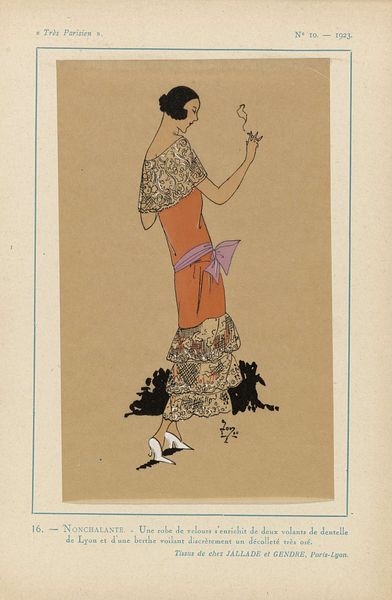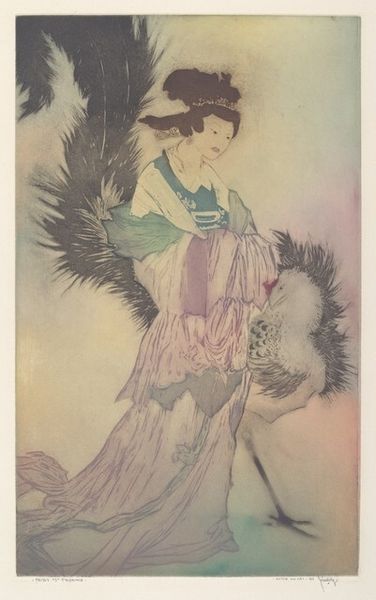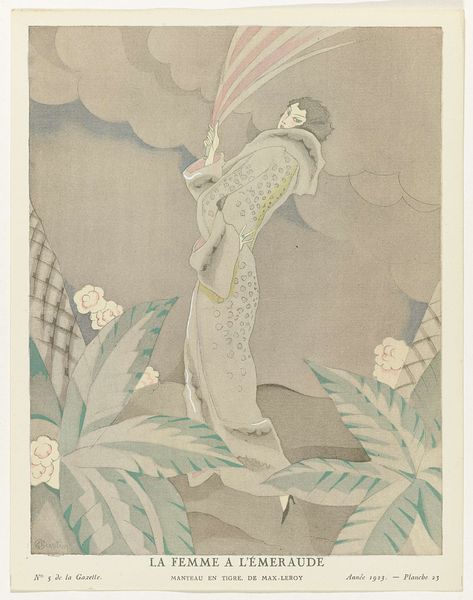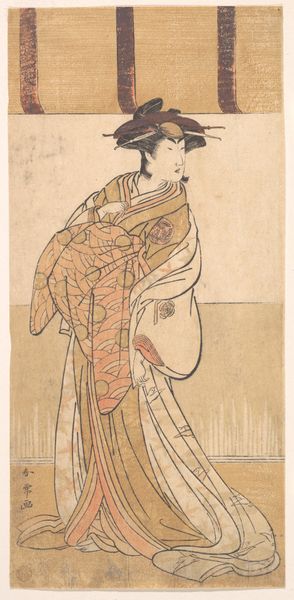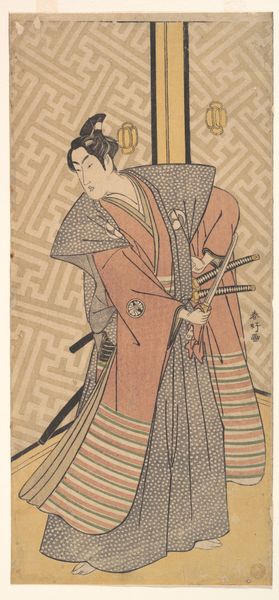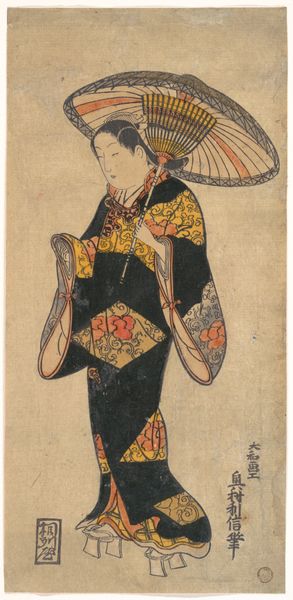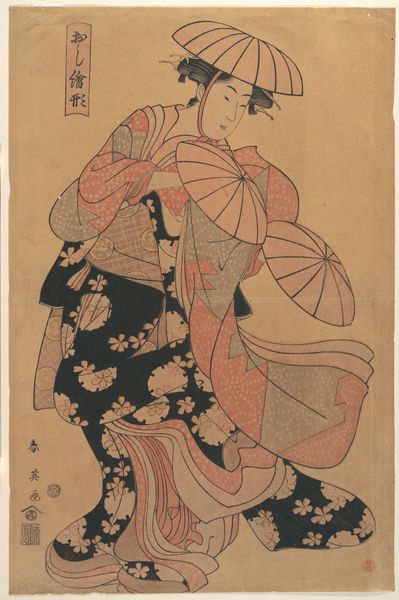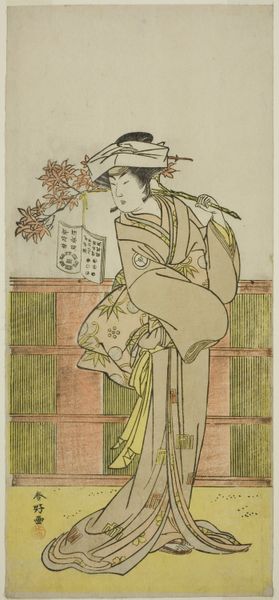
#
portrait
#
toned paper
# print
#
caricature
#
ukiyo-e
#
indigenism
#
figuration
Copyright: National Gallery of Art: CC0 1.0
Curator: Before us, we have "Hawaii" by John Melville Kelly. It’s a print rendered on toned paper, evoking elements of both Ukiyo-e and Indigenism in its style. What strikes you first about it? Editor: Well, there's a quiet power to it, wouldn’t you agree? She feels…grounded. Not quite serene, but certainly present. Curator: Indeed. Kelly lived and worked in Hawaii for much of his career, and his art often sought to portray the local culture and people with respect and dignity, resisting some of the more exoticizing tendencies of his time. Editor: Interesting. It doesn't leap out as a typical island portrait, does it? The muted palette, the way she’s framed by those gigantic leaves… It feels less about paradise and more about person, if that makes sense. Curator: Absolutely. There’s a directness in her gaze and the way she holds the flower. She embodies a strength, refusing to be a mere object of visual consumption. He had an intimate perspective compared to many others working in Hawaii at the time. Editor: The pattern on her skirt too...it feels symbolic, deliberate. A code that I can't quite decipher but I can feel it resonating. Like secrets held in the fiber, doesn't it? And, look at how Kelly simplified form. Curator: The influence of Japanese printmaking is clear. Kelly even learned the techniques himself. In his context he championed those techniques while portraying local people and this earned both critical and local praise. Editor: The choice of toned paper feels key, softens the potential colonial reading of the subject? It adds a layer of complexity...it suggests a subtle story or mood. Curator: It certainly invites reflection on cultural representation, and the artist’s responsibility when depicting other communities. Editor: It certainly does. A quiet call to re-evaluate how we look. Curator: Agreed, that initial sense of quiet power you sensed, remains. I think that lingers. Editor: For sure. Art making is a bridge, isn't it? Sometimes, just standing still, is how you get there.
Comments
No comments
Be the first to comment and join the conversation on the ultimate creative platform.
